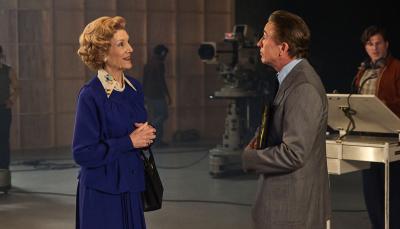Get the Kettle On, It's Time for Tea: A History of the Most British Tradition

It’s not just Downton Abbey. In just about every show imported from Britain there’s a common denominator: tea. Tea is very important to the British and has been for almost four hundred years. It helped win World War II—in 1942, Britain bought up virtually all the tea in the world (except in Japan), knowing how vital it was to morale. Tea was rationed at 2 oz. per person per week until 1952--that's three cups of tea a day.
But back to the beginning—in England, that is. (Tea has been around in China for thousands of years). Tea was probably introduced to the British Isles by Catherine of Braganza, who came from Portugal to marry Charles II in 1662. England, dealing with a new monarch following a Civil War and the Interregnum, had come in late to this particular beverage game but enthusiastically made up for lost time. Tea quickly caught on among the wealthy, and the East India Company, a massive global corporation that controlled Indian exports, traded opium grown in India for tea from China.

This well-off merchant and his family pose to show off their wealth in 1727. They’re drinking tea with great elegance—note the carefully staged hand positions—from blue and white china bowls, also imported from China. Tea cups with handles would be produced later, as English industries expanded and began creating specialized tea-related products made possible by the massive demand for tea. By the end of the eighteenth century, it was common for a tea allowance to be included in a servant’s wages.
From the seventeenth to the nineteenth century, tea was also consumed outside of the home at coffee houses, a specifically male preserve, and at the more family-friendly tea gardens which were about the only form of entertainment open on a Sunday. At one point there were two hundred tea gardens in London, mostly in the suburbs which city-dwelling families traveled to by foot or ferry to enjoy tea, food, entertainment, and fresh air for an affordable entrance fee. By night, many of these establishments took on a rather different character, and became synonymous with crime and prostitution. Cuper’s Gardens opened in the 1680s with the Archbishop of Canterbury as an early business partner, and was well known for its orchestral performances and fireworks displays. It was also known as Cupid’s Garden, not a mispronunciation, and lost its license in 1753 due to the loose morals of its clientele.
But tea was still expensive, highly taxed for decades, and smuggling was a major industry. Richard Twining (of Twinings Tea whose store still stands on the Strand in London) gloomily commented in 1784 that smuggling accounted for two-thirds of tea sales. Even a respectable clergyman, the Rev. James Woodforde, wasn't averse to breaking the law. He recorded in his diary for March 29, 1777,
Andrews the smuggler brought me this night about 11 o’clock a bagg of Hyson Tea. He frightened us a little by whistling under the Parlour Window just as we were going to bed. I gave him some gin and paid him for the tea.
One of Twinings’ customers was a Miss Jane Austen in Hampshire, and we can learn quite a lot about tea drinking habits from her. For middling gentry in the countryside like Austen and most of her characters, tea would be served to guests after dinner, which would probably take place between 3:00 p.m. and 6:00 p.m. It was customary to invite people to tea, but not always to the dinner that preceded it.
In Sense and Sensibility, the sociable Sir John Middleton invites the Dashwood family to tea after dinner one day and to dinner the next. The distinction is that dinner, the main meal of the day featuring many dishes, was already under preparation when he issues the invitation, but he can accommodate extra guests for tea to join in the fun. It’s not meant as a slight or any indication that the Dashwoods are on his guest B-list. Yet that is probably the case, when, for instance in Emma, Miss Bates is invited for tea after dinner; Emma fulfills a neighborly obligation without having to endure Miss Bates’ nonstop stream-of-consciousness chatter for an entire evening.
The other great passion of the English, for sugar, was also fully indulged in this period, thus linking the tea industry to yet another shameful facet of British history, the slave trade. Many people, inspired by the abolitionist movement, boycotted sugar in protest, while others used sugar only in their tea as a demonstration of their self control. Tea itself was controversial—some claimed it was a cure-all, others that it was physically and morally dangerous. After initial suspicion (people enjoyed it! It must be sinful!) the Methodists changed their tune as they realized that tea was replacing alcohol and thus could only be a good thing.

However, the East India Company knew that the China trade could not last indefinitely; sooner or later the Chinese would grow their own opium and not be dependent upon opium from India. But in 1842 a self-educated Scottish horticulturalist named Robert Fortune spent several years in China, collecting plants and venturing deep into the country, often in disguise as a Chinese merchant (all of which were illegal activities). He published his recollections of his adventures and thereby came to the attention of the East India Company, which hired him to steal tea plants, along with the secrets of tea cultivation.
Ironically, tea grew wild in India but at forty feet high it was not harvestable and the British didn’t know what to do with it once it was picked. At great risk to his life, and not particularly well rewarded financially, Fortune was successful, smuggling out not only the plants but Chinese workers too, and thus tea plantations were started in the Darjeeling area of India. Tea became much cheaper and better (Fortune discovered that the Chinese had been using cyanide to improve the appearance of green tea, for instance).
Sometime in the early nineteenth century it became common to add milk to tea. No one really knows why but it does taste better and it’s what we’re used to. (Incidentally, the controversy over whether milk should be added first or last still rages to this day.) And meanwhile, a quiet, delicious revolution was taking place in the dining rooms and drawing rooms of the wealthy—afternoon tea! Allegedly discovered by Anne, Duchess of Bedford in the 1830s (in the same way that the Earl of Sandwich invented the sandwich), it was a result of dinner time moving later to around 8:00 p.m. In other words, her grace became peckish in the late afternoon, and ordered food with tea.
Another quiet upheaval also took place in the kitchens of England around this time: the introduction of baking powder, which made the creation of cakes much easier and also, thanks partly to Queen Victoria who loved all things Scottish and food in general, the modern scone was born. Previously the only way to make something rise before then was with yeast, or eggs and a lot of elbow grease (I wrote a rather ranty blogpost a few years ago about scones appearing anachronistically in historical fiction).
Now it all starts to get really confusing. Originally the term high tea referred to the height of the table, that is, tea and refreshments served at the dining table, and the term low tea was applied to tea served on a lower table while guests sat on sofas or armchairs. Then the term high tea was defined as what was being eaten, particularly by the middle and lower classes after work, which could include proteins such as meat, fish, and pies as well as cakes and tarts and other sweet things—essentially it was the main meal of the day. For working people, the main meal of the day was at noon and the evening meal was called high tea, meat tea, or great tea. And that language persists still. Ask someone in a northern city with an industrial past such as Manchester if they’ve had their tea yet and see what sort of answer you get! Confusingly, Mrs. Beeton in 1879 mentions a little tea, with bread-and-butter, biscuits (i.e. cookies) and cake served. By this time, however, the concept of afternoon tea was in full swing and still predominantly a feminine pursuit.
I’m afraid to say that what we think of as high tea—tiers of sandwiches, small cakes, biscuits, and scones served with tea—is a recent, although delicious, invention with no historical equivalent.
So let’s get the kettle on and talk tea! Tell me what sort of tea you like, and if you add milk, do you add it before or after? Have you ever had a high tea and what did you eat?



